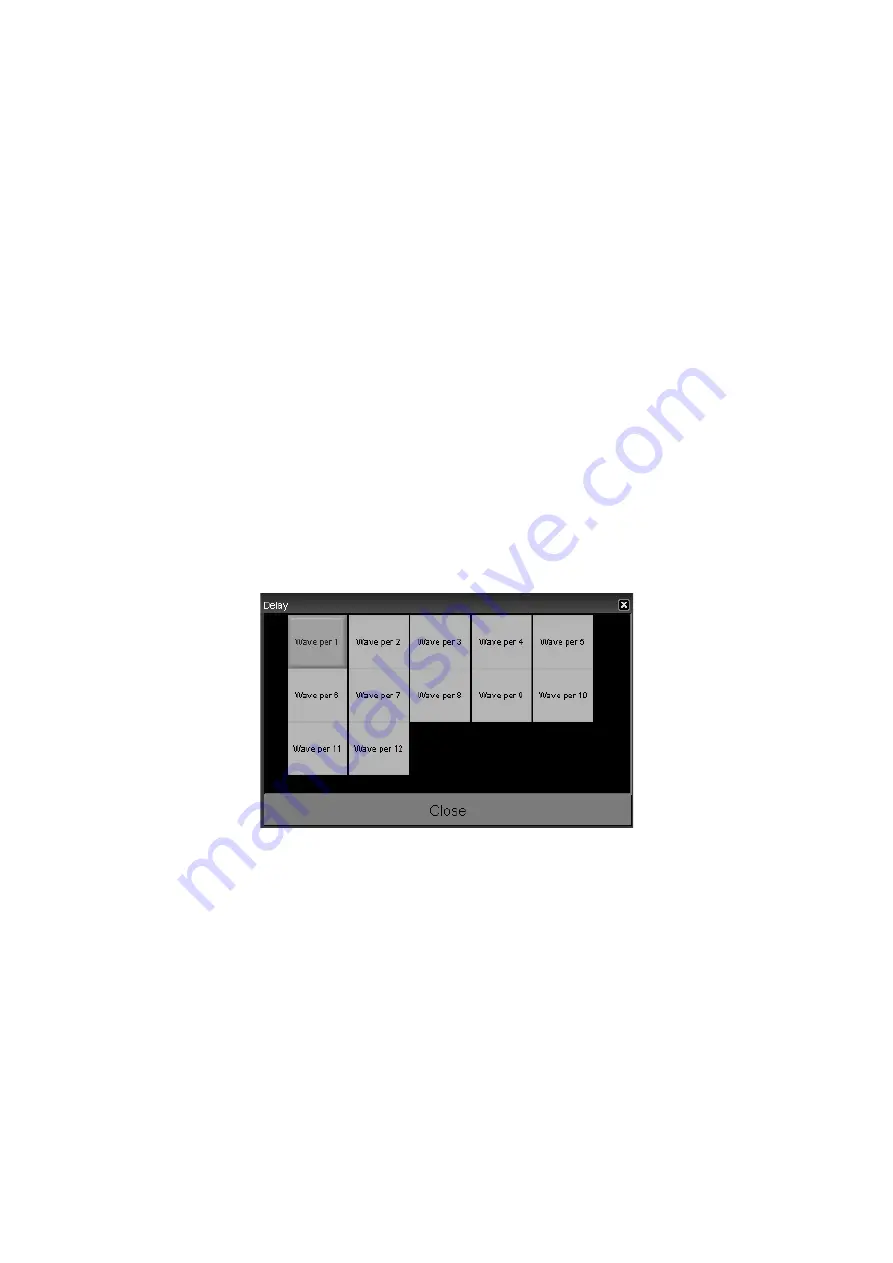
144
Maxxyz
You’ll note that the fixture has stopped, but it is not at its baseline (between the sphere and the
pyramid). The effect is still “running” but it has, in a manner of speaking, “frozen in time.”
6 Return the speed to 200.
At this point you may wish to move the pan/tilt attributes and move the baseline around.
Of course on the Maxxyz console you can have different attributes on the same fixture running
different effects at different speeds. All attributes of every fixture can run an effect.
T
I M E
E
F F E C T S
Where Regular Effects can be used with a single fixture and deal with movement, Time Effects
address groups of fixtures and the execution of the regular effects. While it is, of course possible
to assign Time Effects to individual fixtures, there would be no discernible behavior in the fixture.
Time Effects consist of Delay (or Wave), Shift (or Step), and Wait. Wait is not fully implemented at
this time and will be addressed in a later revision of this manual.
D
ELAY
/W
AVE
The Delay element creates the image of a wave of effects. With the same regular effect running
on a group of fixtures, utilizing Delay will cause the fixtures to be at a different points in that
effect. The number of points along the duration of the effect that the group of fixtures is divided
into is set using Delay. While Delay
can
be set using the trackbelt, it is highly recommended that
you use the touch screen; either the pop-up window or by touching the values listed in the Delay
column.
The Delay pop-up window will automatically populate with x number of “Wave per x” selections
where “x” is the number of fixtures selected. With 12 fixtures selected, the box above will be
available. The first selection, “Wave per 1” is essentially no wave. “Wave per 1” puts all 12
fixtures at the same point on the wave. “Wave per 2” creates two points for the fixtures to be at in
the effect. The even fixtures will be 180 degrees off of where the odd fixtures are. This increases,
in this example to “Wave per 12” where each fixture has its own, evenly distributed point along
the curve of the effect. To examine how Delay works, do the following:
1 Using the tutorial.scn, select all the MAC 600s and bring them to full.
2 Select the Tilt attribute hard key.
3 In Regular Effects, set Swing to 18, Speed to 250 and use Mode #3 as described earlier.
The fixtures should be tilting from their “home” position to somewhere near the downstage edge
of the stage.
4 Select the “Time Effect” LCD key.
5 Double click the hard key below the “Delay” label to open the pop-up window shown above.
Summary of Contents for Maxxyz
Page 1: ...Maxxyz user manual For Use with Software Version 1 3 78 ...
Page 8: ...8 Maxxyz ...
Page 154: ...154 Maxxyz ...
Page 155: ...Appendix 3 Wiring Charts 155 ...
Page 156: ...Appendix 3 Wiring Charts 156 ...
Page 160: ......






























